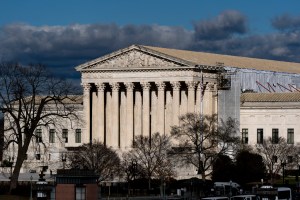New York State’s rules affecting rents have been rewritten, providing more protections for renters — and possibly throwing up more roadblocks for landlords and developers.
The rules primarily impact rent control in New York City and rent-stabilized communities across the state, including a dozen communities in Nassau County, but often impact rentals statewide. Renters are more enthusiastic about the changes than landlords.
“If you’re on the tenant side, a lot of these rules may be, in your opinion, fairer,” says Mitch Pally, CEO of the Islandia-based Long Island Builders Institute. “If you’re on the landlord’s side, a lot of these rules may seem too advantageous for the tenant and not ensure the landlord will get paid.”
Rosemary Rivera, co-executive director of Citizen Action of New York, calls the rules a “giant first step toward protecting tenants and affirming that housing is a human right.”
Adriene Holder, attorney in charge of civil practice at The Legal Aid Society, says the deal will “advance historic housing reforms across the state.”
“Tenant advocacy groups and the leaders in the Democrat-controlled State Senate and Assembly see the new law as a victory,” Matthew Doty, a principal at Berdon, writes. “However, real estate trade organizations are already sounding the alarm that this could hurt the dwindling stock and quality of affordable housing units.”
Long Island has what many view as a rental shortage. More than a third of Nassau and Suffolk communities have under 10 percent rental homes, according to Long Island’s Rental Housing Crisis, a 2013 study done for the Long Island Community Foundation, the Regional Plan Association and Ford Foundation.
Rent control in New York City applies to certain types of apartments there, allowing landlords to raise the rent by a certain amount and giving tenants the right to remain there.
Rent stabilization laws for apartments built before 1974 also apply to portions of Westchester and Nassau, such as the villages of Mineola, Hempstead and Great Neck. These areas enacted laws allowing them to implement stabilization regulations as long as their community has less than a 5 percent vacancy rate.
“Many of the loopholes that were allowed have now been closed,” Pally says of basic rental regulations. “You used to be able to increase the rent based on capital improvements to apartments.”
The new law limits rent increases from 6 percent to 2 percent in New York City based on capital improvements and from 15 percent to 2 percent in other counties.
“It may cause a developer or owner not to make the capital improvements necessary, because they can’t automatically recoup the expenses by raising the rent,” Pally says.
While the new rules don’t target affordable housing, Pally says they could negatively impact these projects on Long Island.
“With the new rules, affordable housing builders may have more difficulty getting financing for their projects,” Pally says. “The bank or whoever’s financing wants to make sure they recover their financing. The more rules and restrictions, the more difficult it is to get your money back — and get money in the first place.”
Landlords can only charge one month security deposit under the new rules, which might make them more reluctant to rent to tenants with bad credit.
“If you had someone with credit problems, you made them pay a higher security deposit in the past, to ensure the landlord would get paid for the rent,” Pally says. “Now you can’t do that anymore.”
The Real Estate Board of New York has indicated it plans to file suit against the state related to new regulations, and other suits may follow.
“They have a lot of projects already in the ground,” Pally says. “Those will move forward. The problem is whether they have difficulty getting financing for new projects. We won’t know that until they start to develop new projects.”



























